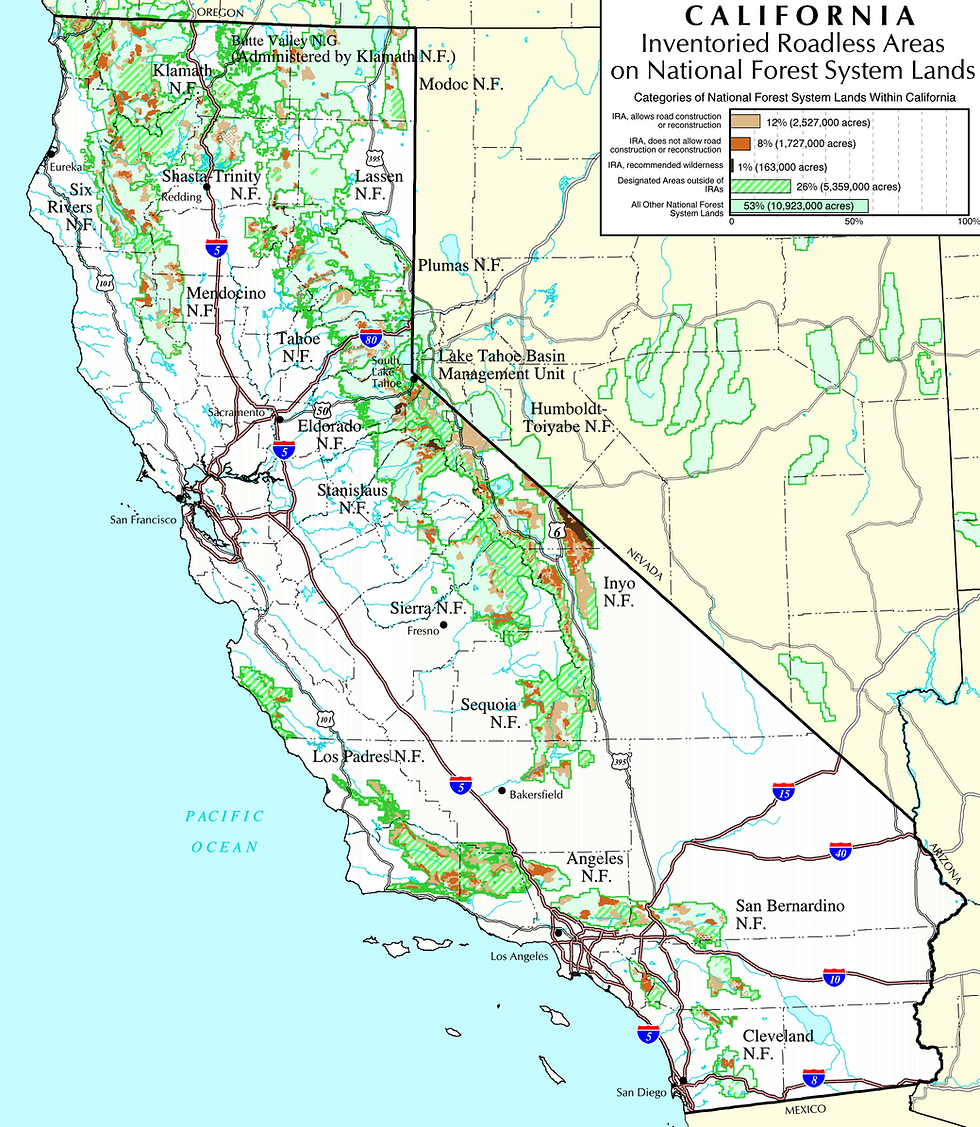EPIC Staff Squash Timber Industry Shenanigans at Fish and Game Commission
- Dec 18, 2013
- 4 min read

Photo by Jeff Musgrave
If at first you don’t succeed, try, try again. That seemed to be the approach of the timber industry before the California Fish and Game Commission in San Diego last week. This time, it was the imperiled Northern Spotted Owl at risk.
At their August 2013 meeting the Fish and Game Commission had accepted a petition filed by EPIC to list the Northern Spotted Owl (NSO) as either “threatened” or “endangered” under the California Endangered Species Act (CESA), and designated the species as a candidate for listing pending a full status review by the California Department of Fish and Wildlife. Candidate species under CESA are fully protected from “take” unless a project proponent secures an Incidental Take Permit from the California Department of Fish and Wildlife (CDFW), or a Consistency Determination from CDFW for pre-existing federal Habitat Conservation Plans that cover the candidate species.
As you might expect, there’s additional red-tape associated with the owl candidacy becoming official and effective. First, the Fish and Game Commission must draft and adopt findings for the candidacy decision. It took the Commission until their December 2013 meeting to prepare the findings for adoption, but the Commission ultimately adopted them. Still, there is another hoop. The State Office of Administrative Law must review the findings and assure that they are consistent with the requirements of the state Administrative Procedures Act. Whew!
So, back to the timber industry. Having been thwarted in its attempts to prevent the Commission from designating Northern Spotted Owls as a candidate for listing under CESA and offering the species interim protections under state law, the industry decided to turn its attention to securing regulations that would allow the killing of owls under specified circumstances during the one-year candidacy period. So, the industry, led by the California Forestry Association, filed a petition with the Commission asking for the regulatory body to authorize “incidental take” (i.e. the killing of owls) on an emergency basis. The regulations they proposed to use as “incidental take” regulations? Why none other than the California Forest Practice Rules, which are purportedly designed to avoid “take” (i.e. the killing of owls) as a result of timber operations.
A little over a year and a half ago, the industry had filed a nearly identical petition to allow the killing of then-listing candidate Black-backed woodpeckers on an emergency basis. In the case of the Black-backed woodpecker, the petitioners, Center for Biological Diversity and the John Muir Project, filed suit against the Commission for adopting the petition on an emergency basis. The argument: The industry could not show that an actual “emergency” existed under the definition attributed under California law. Long story short, the Commission declined to defend itself, and agreed to a Stipulated Judgment that set aside the regulations instituted as a result of the emergency petition.
So, back to San Diego last week. The Fish and Game Commission was to consider adopting the industry’s emergency regulations proposal for NSO. EPIC staff made the long trip to San Diego. This, it appeared, was a great surprise to the timber industry. Calforests was not expecting the grassroots and community based EPIC, clearly short of resources for a travel budget, to be at the meeting. At the hearing on the petition, EPIC staff presented the argument that, as with the Black-backed woodpecker, the timber industry could not show an emergency as defined under California law.
The timber industry, lead by the California Forestry Association, Green Diamond, and SPI, all attempted to persuade the Commission to adopt the petition. What’s interesting here is that not one of those that testified for the industry actually used the word “emergency” in the context of their testimony.
Then, seemingly out of nowhere, the California Forestry Association representative, in the midst of his testimony in favor of the petition, announced that the industry would retract it. The CFA representative also said that the industry would come back with a new more “narrowly focused” petition for the Commission to consider at the February Fish and Game Commission meeting in Sacramento. So, while now twice slain, this beast will rise again, or it appears.
The importance of this development cannot be understated. The timber industry was vying to gain permission under state law to kill Northern Spotted Owls during the candidacy period for the species. EPIC’s success in this matter means that the full protections of the California Endangered Species Act will be afforded to Northern Spotted Owls, while the Department of Fish and Wildlife conducts its status review and prepares a full status-report for the species.
Northern Spotted Owls face a wide array of threats to their survival and recovery in California. From habitat lost to timber harvest on both private and public lands, to competition from invasive barred owls, to the ingestion of rat-poison laden prey that is the increasingly toxic fallout from egregious cannabis agriculture operations, to adapting to climate change and drought, this species finds itself on the edge. The position of EPIC is that the State of California has a responsibility to offer the protections of state law to this species. EPIC staff will continue to persevere and monitor the ongoing events at the Fish and Game Commission related to Northern Spotted Owl, until a final listing decision is made.





Comments